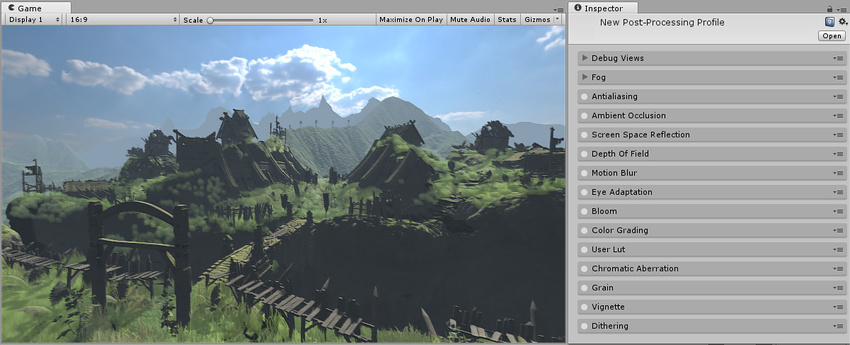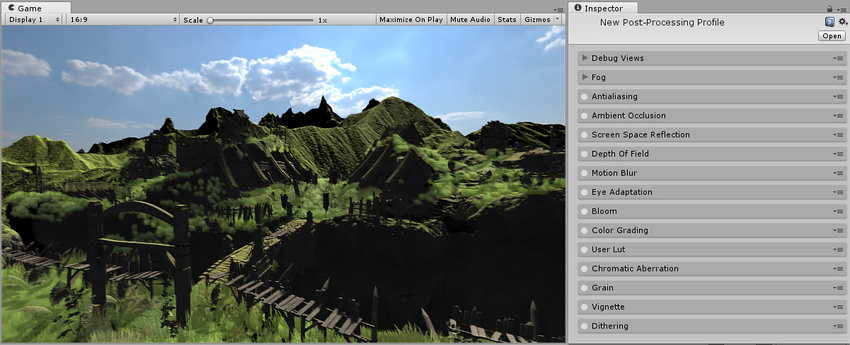Fog
The effect descriptions on this page refer to the default effects found within the post-processing stack.
Fog is the effect of overlaying a color onto objects dependant on the distance from the cameraA component which creates an image of a particular viewpoint in your scene. The output is either drawn to the screen or captured as a texture. More info
See in Glossary. This is used to simulate fog or mist in outdoor environments and is also typically used to hide clipping of objects when a __camera__’s far clip plane has been moved forward for performance.
The Fog effect creates a screen-space fog based on the camera’s depth texture. It supports Linear, Exponential and Exponential Squared fog types. Fog settings should be set in the Scene tab of the Lighting window.



Properties
| Property: | Function: |
|---|---|
| Exclude Skybox | Should the fog affect the skyboxA special type of Material used to represent skies. Usually six-sided. More info See in Glossary? |
Details
This effect is only applied in the deferred rendering pathThe technique Unity uses to render graphics. Choosing a different path affects the performance of your game, and how lighting and shading are calculated. Some paths are more suited to different platforms and hardware than others. More info
See in Glossary. When using either rendering path fog should be applied to forward rendered objects using the Fog found in SceneA Scene contains the environments and menus of your game. Think of each unique Scene file as a unique level. In each Scene, you place your environments, obstacles, and decorations, essentially designing and building your game in pieces. More info
See in Glossary Settings. The parameters for the Post-processing fog are mirrored from the Fog parameters set in the Scene tab of the Lighting window. This ensures forward rendered objects will always receive the same fog when renderingThe process of drawing graphics to the screen (or to a render texture). By default, the main camera in Unity renders its view to the screen. More info
See in Glossary in deferred.
Requirements
ShaderA small script that contains the mathematical calculations and algorithms for calculating the Color of each pixel rendered, based on the lighting input and the Material configuration. More info
See in Glossary model 3
See the Graphics Hardware Capabilities and Emulation page for further details and a list of compliant hardware.
2017–05–24 Page published with no editorial review
New feature in 5.6
Did you find this page useful? Please give it a rating: